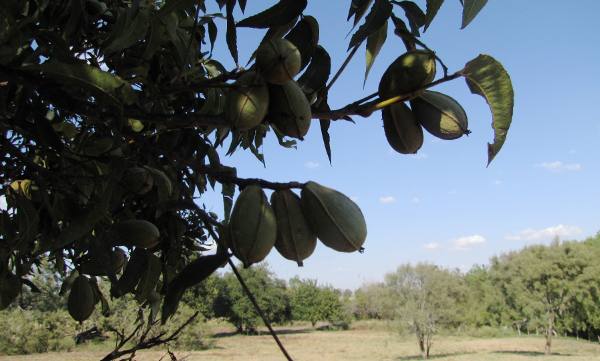
In the modern world, news and information is doled out wholesale 24/7 by wire services, TV and cable news, newspapers, radio broadcasts, across the Internet, on news tickers, press releases, billboards, and in the case of sporting games and special events like spring break, by aerial banners towed by aircraft and blimps with flashing electronic messages.
But the best information often comes from unexpected sources, and this is especially true for agriculture.
Regardless what you may learn in a classroom about crop production and protection, the hundreds—if not thousands—of newsletters published on various schedules each year in Texas alone provide a wealth of information, much of which would never see the light of a media day if it wasn’t for subscription-based newsletter services.
A case-in-point is the Texas A&M AgriLife Extension Texas Pecan Pest Management Newsletter published several times a year and edited by Extension specialist Bill Ree in Bryan.
For serious Texas pecan growers, Ree’s newsletters represent the Holy Grail of pest information when it comes to commercial nut production, which comes as no surprise.
Ree has a BS in forestry and a Masters in Entomology from Oklahoma State University. He has served in the Louisiana Cooperative Extension Service as well as Texas Cooperative Extension and Texas AgriLife Extension Service spanning the last 32 years.
His credits include editorial contributions to Pecan South Magazine, articles for The Pecan Grower, a respected (Pecan Kernel) website, and at least seven extension publications. Collaborative work includes projects with the Texas Pecan Growers Association, Western Pecan Growers Association, USDA-ARS, Oklahoma State University, Boston University, Louisiana State University, the Pecan ipmPIPE website, and the PNC forecast website.
Bill has also authored a number of scholarly publications and is in high demand as a speaker and presenter at a multitude of pecan and pest events.
Chances are good you won’t find Bill Ree’s name next to Cronkite’s or Brokaw’s or Jenning’s or Murrow’s. While most of us can agree that news can truly be “nuts” at times, growing nuts is a news niche of its own, and what famous anchors and news presenters of the past were to the general population of the time, Bill Ree is to the U.S. nut grower of today.
In this month’s spring-season issue of the Texas Pecan Pest Management Newsletter, Ree’s first pecan IPM newsletter of 2013, he reports that pecan bud break is just around the corner and soon will be the time to start foliar zinc sprays. He reminds pecan growers that adhering to sound horticultural practices is critically important for success.
“[Remember] zinc, fertility and water to make your trees produce and then a sound IPM program to protect the crop,” he advises in the newsletter.
As always, phylloxera is a concern for pecan producers, especially if you had problems last year.
“For those producers that had phylloxera last season the treatment time will be when there is one to two inches of new growth. Once the phylloxera crawlers are imbedded in the new tissue and when galls are observed it is too late. Spot treatments are an option with this insect in that treatments only need to be applied to those trees that had galls in 2012. Insecticides recommended are contact products or any of the IRAC Group 4A products containing the active ingredients imidacloprid and thiamethoxam,” he advises.
Also of concern are June bugs, or May beetles, feeding on new growth. Young trees are especially at risk. Since adult June bugs feed only at night, growers should check their trees for damage during the day or during the evening hours when the bugs become active. The best, and possibly only solution to active June bugs, is an application of a contact insecticide to the foliage.
As always, Ree warns that pecan nut casebearers may be active again early this year as they were last year thanks to a warm spring. He advises that now is the time to order PNC pheromone traps if you haven’t already. He warns that southern and central Texas traps should be in the orchard no later than the first week of April and northern orchards a couple of weeks later.
If you are enjoying reading this article, please check out Southwest Farm Press Daily and receive the latest news right to your inbox.
If you are not a subscriber to the Texas Pecan IPM Newsletter and would like receive timely updates from Bill Ree, call the Texas A&M AgriLife Extension Service District 9 Office at 979-845-6800 and ask to be included on the list. You can also find helpful information at the Pecan IPM PIPE website at http://pecan.ipmPIPE.org and at the Pecan Kernel website (http://pecankernel.tamu.edu).
You may also like:
New pecan variety available to US producers
Surging pecan prices hit stiff resistance
New Lipan pecan variety offers good yield, disease resistance
About the Author(s)
You May Also Like




